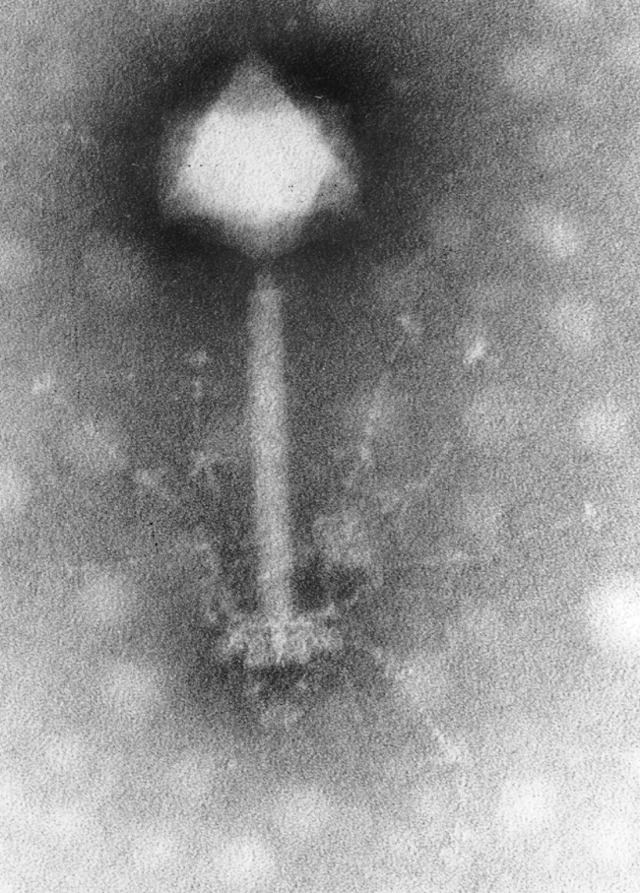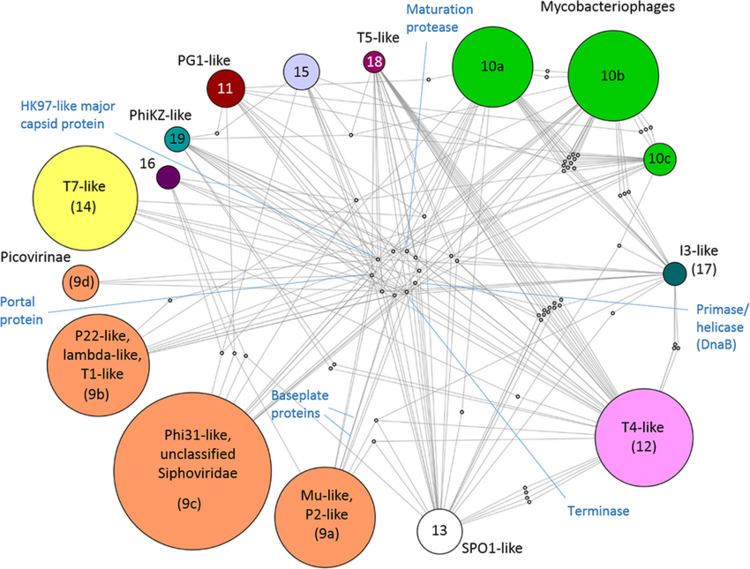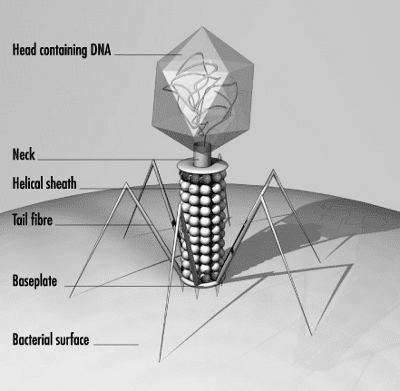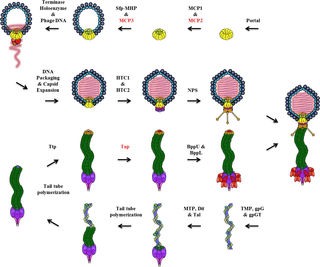Scientific name Caudovirales Rank Order | ||
 | ||
Lower classifications Myoviridae, Bacillus phage phi29, Phi X 174, M13 bacteriophage, Bacteriophage T5 | ||
The Caudovirales are an order of viruses also known as the tailed bacteriophages. Under the Baltimore classification scheme, the Caudovirales are group I viruses as they have double stranded DNA (dsDNA) genomes, which can be anywhere from 18,000 base pairs to 500,000 base pairs in length. The virus particles have a distinct shape; each virion has an icosohedral head that contains the viral genome, and is attached to a flexible tail by a connector protein. The order encompasses a wide range of viruses, many of which containing genes of similar nucleotide sequence and function. Some tailed bacteriophage genomes can vary quite significantly in nucleotide sequence, however, even among the same genus. Due to their characteristic structure and possession of potentially homologous genes, it is believed these bacteriophages possess a common origin.
Contents

There are at least 350 recognised species in this order.
Infection

Upon encountering a host bacterium, the tail section of the virion binds to receptors on the cell surface and delivers the DNA into the cell by use of an injectisome-like mechanism (an injectisome is a nanomachine that evolved for the delivery of proteins by type III secretion). The tail section of the virus punches a hole through the bacterial cell wall and plasma membrane and the genome passes down the tail into the cell. Once inside the genes are expressed from transcripts made by the host machinery, using host ribosomes. Typically, the genome is replicated by use of concatemers, in which overlapping segments of DNA are made, and then put together to form the whole genome.
Assembly and maturation

Viral capsid proteins come together to form a precursor prohead, into which the genome enters. Once this has occurred, the prohead undergoes maturation by cleavage of capsid subunits to form an icosohedral phage head with 5-fold symmetry. After the head maturation, the tail is joined in one of two ways: Either the tail is constructed separately, and joined with the connector, or the tail is constructed directly onto the phage head. The tails consist of helix based proteins with 6-fold symmetry. After maturation of virus particles, the cell is lysed by lysins, holins, or a combination of the two.
Taxonomy

Because of the lack of homology between the amino acid and DNA sequences of these viruses these factors are precluded from being used as taxonomic markers as is common for other organisms, the three families here are defined on the basis of morphology. This classification scheme was originated by Bradley in 1969 and has been extended since.

All viruses in this order have icosahedral or oblate heads but differ in the length and contractile abilities of their tails. The Myoviridae have long tails that are contractile; the Podoviridae have short noncontractile tails; and the Siphoviridae have long noncontractile tails. Siphoviridae constitute the majority of the known tailed viruses.

Bradley referred to what is now known as the Myoviridae as type A, Siphonviridae as type B, and the Podoviridae as type C. He also divided his groups on the basis of head morphology: Within group A, A1 have small isometric heads; A2 have prolate heads; and A3 have elongated heads. Within groups B and C, numbers were similarly assigned: B1 and C1 have small isometric heads; B2 and C2 have prolate heads; and B3 and C3 have elongated heads.
Bacteriophage evolution

Bacteriophages occur in over 195 bacterial or archaeal genera. They arose repeatedly in different hosts and there are at least 11 separate lines of descent. Over 6300 bacteriophages have been examined in the electron microscope since 1959. Of these, more than 96 percent have tails. Of the tailed phages, about 57 percent have long, noncontractile tails (Siphoviridae). Tailed phages appear to be monophyletic and are the oldest known virus group.

